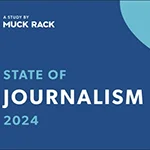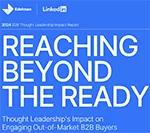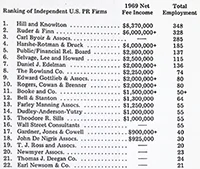Most consumers want brands to alter their communications strategies after we emerge from the coronavirus pandemic. According to recent research conducted by market research organization GfK, they simply disagree on what those new messages should be.
GfK’s report, which tracked consumer reactions to COVID-19, discovered that more than half of U.S. consumers (55 percent) believe brands after the pandemic should adopt a new set of concerns and communications messages that reflect a different, post-COVID-19 world.
On the other hand, the remaining 45 percent think companies should return “as soon as possible” to themes they were employing before the crisis occurred, one the effectively suggests that the COVID-19 crisis never happened.
Consumers remain split on what specific messages they want brands to employ after the pandemic, but among those who prefer a “different world” approach to communications messages, a majority said they’d like to see messaging that involves protecting consumers’ and employees’ health.
Among those who want brands to return to pre-COVID themes, innovations, promotions and general product information remain among the preferred communications topics.
Both groups, however, said themes around price controls for key items remain a high priority.
The GfK report also discovered several variables that made consumers more likely to favor new or preexisting messaging post-COVID.
Two-thirds of respondents (66 percent) with children under the age of three prefer a return to pre-virus messaging, compared to only about a third (34 percent) of those with no children. More than half (56 percent) of those living in large urban areas want brands revert to earlier themes, compared to 40 percent of those who live in smaller cities.
Finally, 60 percent of women think brands should alter their communications messages to reflect a different, post-pandemic world, while men remained evenly split—50-50—between forward-looking and nostalgic messaging.
GfK’s Consumer Pulse report gauged responses from more than 1,020 U.S. consumers between May 29 and May 30.


 Brand has a powerful effect on a company’s valuation, but the level of brand understanding in the investment community leaves a lot to be desired, according to a new study from Brodeur Partners, Interbrand and NewtonX.
Brand has a powerful effect on a company’s valuation, but the level of brand understanding in the investment community leaves a lot to be desired, according to a new study from Brodeur Partners, Interbrand and NewtonX. AI may still be viewed with a wary eye by most media pros, but its use is growing, according to a new study from Muck Rack.
AI may still be viewed with a wary eye by most media pros, but its use is growing, according to a new study from Muck Rack. A new study from Walker Sands says that some marketers have been putting the cart before the horse when it comes to the relationship between marketing channels and business outcomes.
A new study from Walker Sands says that some marketers have been putting the cart before the horse when it comes to the relationship between marketing channels and business outcomes. Thought leadership can make made B2B brands more "powerful and attractive to buyers," according to Edelman report.
Thought leadership can make made B2B brands more "powerful and attractive to buyers," according to Edelman report. The deadline for O'Dwyer's 2024 rankings of PR firms, a benchmark study of the growth of the industry annually since 1970, is Mon., Mar. 11, 2024.
The deadline for O'Dwyer's 2024 rankings of PR firms, a benchmark study of the growth of the industry annually since 1970, is Mon., Mar. 11, 2024.


 Have a comment? Send it to
Have a comment? Send it to 
No comments have been submitted for this story yet.